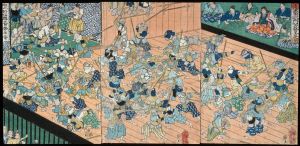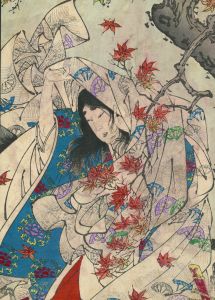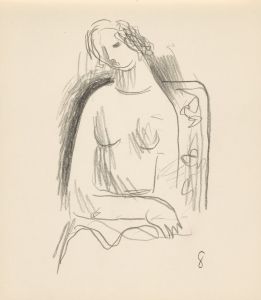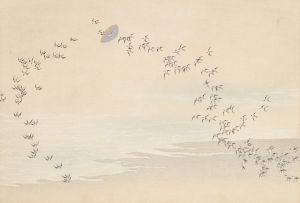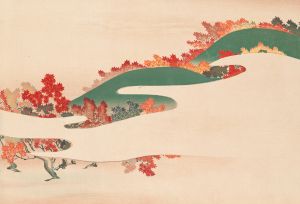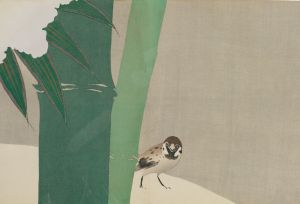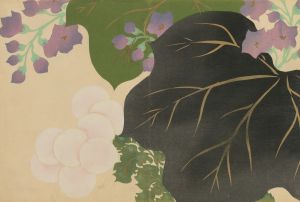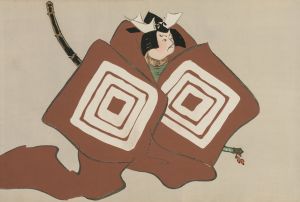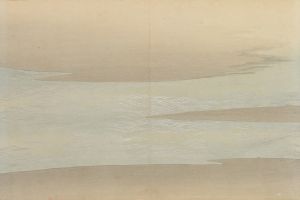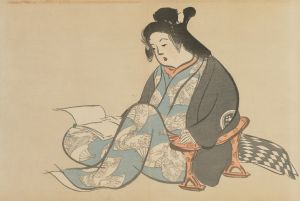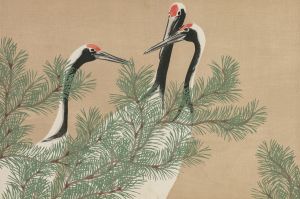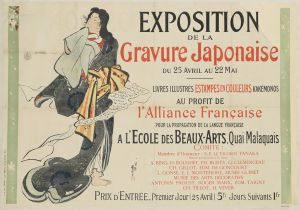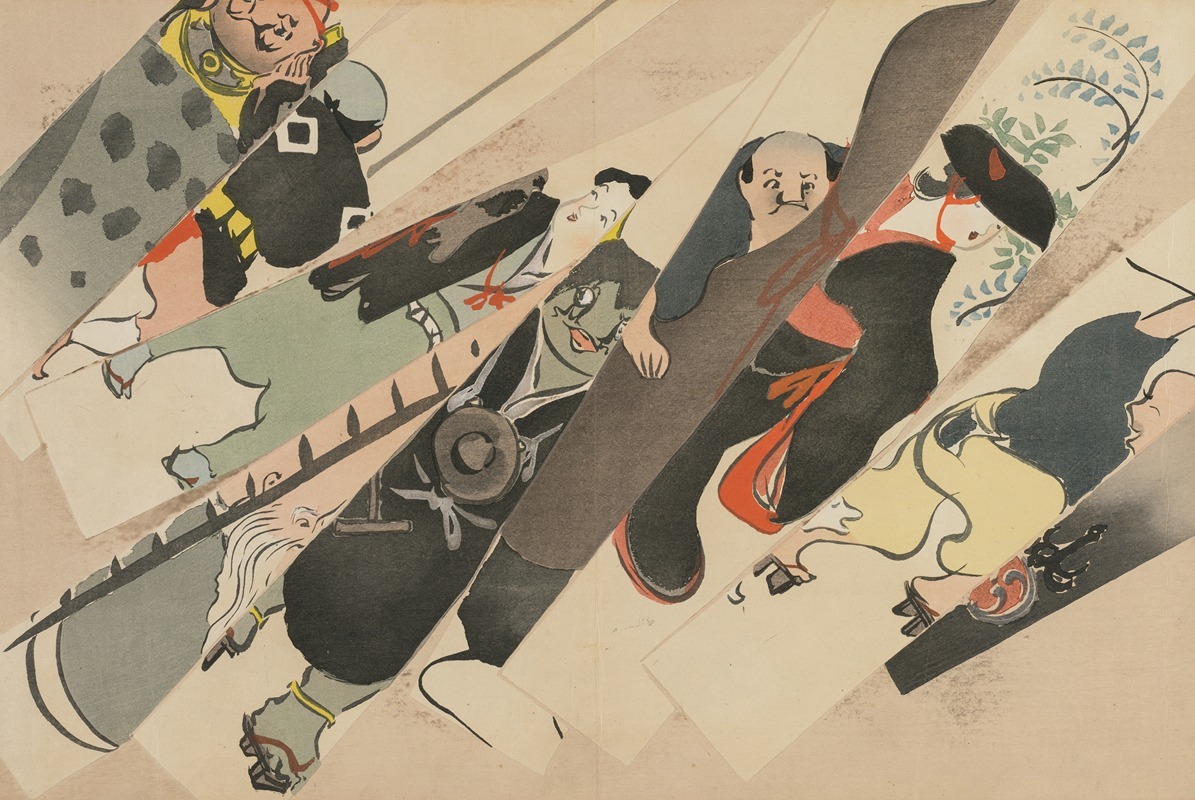
Otsu-e
A hand-painted replica of Kamisaka Sekka’s masterpiece Otsu-e, meticulously crafted by professional artists to capture the true essence of the original. Each piece is created with museum-quality canvas and rare mineral pigments, carefully painted by experienced artists with delicate brushstrokes and rich, layered colors to perfectly recreate the texture of the original artwork. Unlike machine-printed reproductions, this hand-painted version brings the painting to life, infused with the artist’s emotions and skill in every stroke. Whether for personal collection or home decoration, it instantly elevates the artistic atmosphere of any space.
Otsu-e by Kamisaka Sekka is a notable work that reflects the unique blend of traditional Japanese art and modern influences. Kamisaka Sekka (1866-1942) was a prominent Japanese artist and designer, known for his contributions to the Rinpa school of painting, which is characterized by its use of vibrant colors, bold patterns, and a strong emphasis on nature and seasonal themes.
Otsu-e, which translates to "pictures from Otsu," refers to a genre of Japanese folk art that originated in the town of Otsu, near Kyoto, during the Edo period (1603-1868). These paintings were typically created by anonymous artists and sold as souvenirs to travelers. Otsu-e often depicted popular themes such as Buddhist deities, folklore characters, and scenes from everyday life, rendered in a simple, yet expressive style.
Kamisaka Sekka's interpretation of Otsu-e is a fascinating example of how traditional art forms can be reimagined through the lens of modern aesthetics. Sekka was deeply influenced by the Rinpa school, which was founded in the early 17th century by Hon'ami Koetsu and Tawaraya Sotatsu, and later revitalized by Ogata Korin and Ogata Kenzan. The Rinpa school is known for its decorative approach, use of gold and silver leaf, and emphasis on natural motifs.
In his Otsu-e works, Sekka retained the playful and whimsical spirit of the original folk paintings while incorporating elements of the Rinpa style. His use of bold colors, dynamic compositions, and intricate patterns reflects the influence of both traditional Japanese art and the Art Nouveau movement, which was gaining popularity in Europe at the time. Sekka's ability to merge these diverse influences resulted in a distinctive and innovative body of work that continues to be celebrated for its artistic merit and cultural significance.
One of the key aspects of Sekka's Otsu-e is his attention to detail and craftsmanship. He employed a variety of techniques, including woodblock printing and hand-painting, to achieve the desired effects in his compositions. This meticulous approach is evident in the fine lines, delicate textures, and harmonious color schemes that characterize his work.
Sekka's Otsu-e also reflects his broader interest in design and the decorative arts. In addition to painting, he was involved in various other artistic endeavors, including textile design, lacquerware, and ceramics. His holistic approach to art and design is evident in the cohesive and integrated nature of his work, where each piece is carefully considered in terms of both form and function.
Overall, Otsu-e by Kamisaka Sekka represents a unique fusion of traditional Japanese folk art and modern design principles. Through his innovative reinterpretation of this classic genre, Sekka not only preserved the cultural heritage of Otsu-e but also elevated it to new artistic heights. His work continues to inspire and captivate audiences, serving as a testament to the enduring appeal of Japanese art and its capacity for reinvention.





